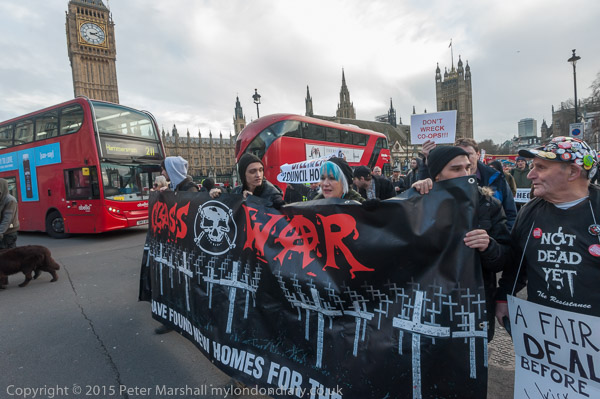
You don’t expect a huge turnout for a protest on a Tuesday lunchtime in January, and the few hundred who came to show their anger at the proposals in the Housing and Planning Bill being debated in Parliament was actually more than I expected. Like too much legislation at the moment it’s a measure that has received very little of the attention it deserves, either inside parliament or in the press.
The Labour Party is of course totally absorbed with its own infighting, few if any Conservatives have any idea of the pressures faced by those who don’t own several properties, have high incomes and savings and extensive family support – and even fewer seem to care. It was a bill about housing in England, so the SNP were not greatly involved, and the effective opposition in the House of Commons was thus the Green Party – all of one MP. To be fair the House of Lords did rather better, though in the end were forced to concede to government pressure.
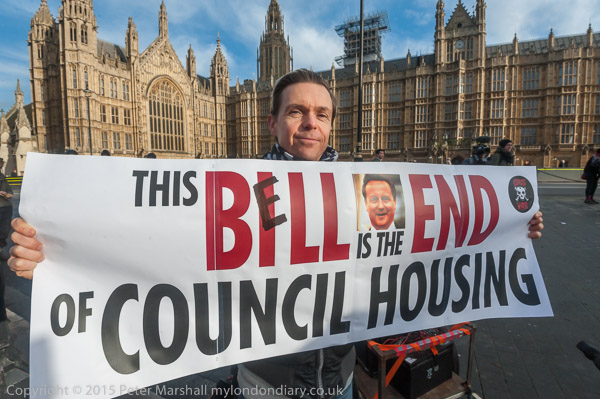
The mainstream media weren’t interested as it didn’t greatly involve personalities or celebrities, and it was hard to use the issue to show Jeremy Corbyn in a bad light. So despite it being accurately described as “one of the most dangerous and far-reaching pieces of legislation passed in this country in a long time” and representations to parliament by 150 housing sector organisations which were ignored, as well as opposition from a wide range of other groups concerned with housing and poverty issue, the bill continued on its way to becoming law almost unnoticed. You can read a more detailed and less biased view of it on ‘Inside Housing‘ (free registration needed.)
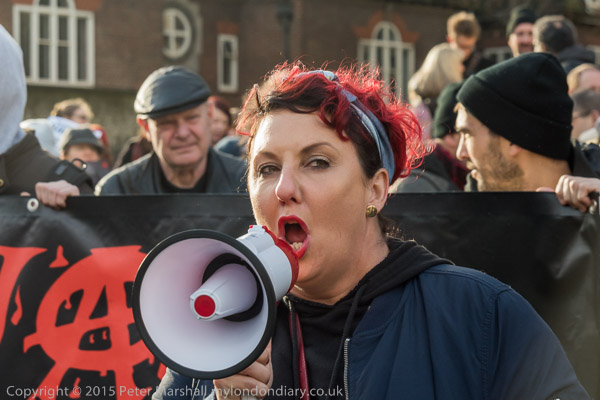
Even London Labour councils busily selling off council estates and getting into bed with private developers were up in arms about the Bill, and joined in protests such as this one. Or at least came to them though perhaps tried to rather stand aside from the actual protest. So when things got a little lively they tried to disassociate themselves from people who make noisy speeches and loud chants, let alone let off smoke flares. Perhaps surprisingly, so did at least some of the Socialist Workers Party members present, though perhaps they were more against the fact that they were not being allowed to take charge of the protest.
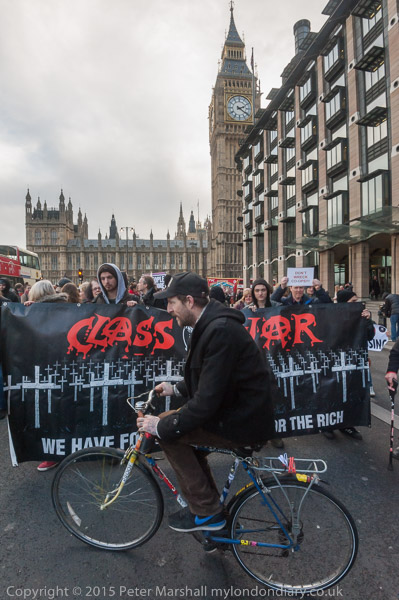
When Class War along with ASH (Architects for Social Housing) and activists from the Aylesbury Estate decided to lead off on a march around Westminster, the Labour Party and others decided to stay put, a small group having a quiet protest where nobody would notice them.

It perhaps wasn’t a great march around the area, but certainly many more people will have noticed it going on, including many more MPs as it went along the street past the House of Commons and then Portcullis House, as well as those on Whitehall as they protested outside Downing St before leaving to go back past Parliament to the small group left in Old Palace Yard, who were packing up as they arrived back.
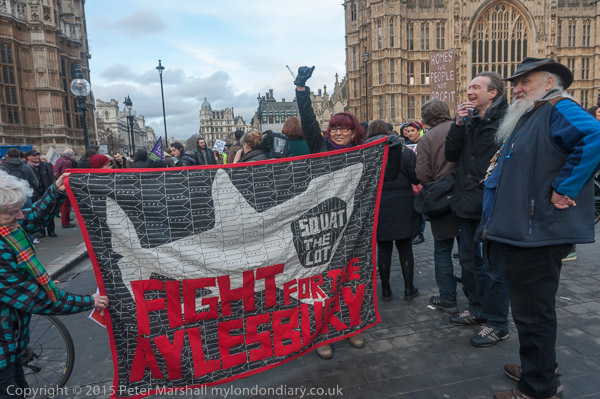
More at: Kill the Housing Bill protest